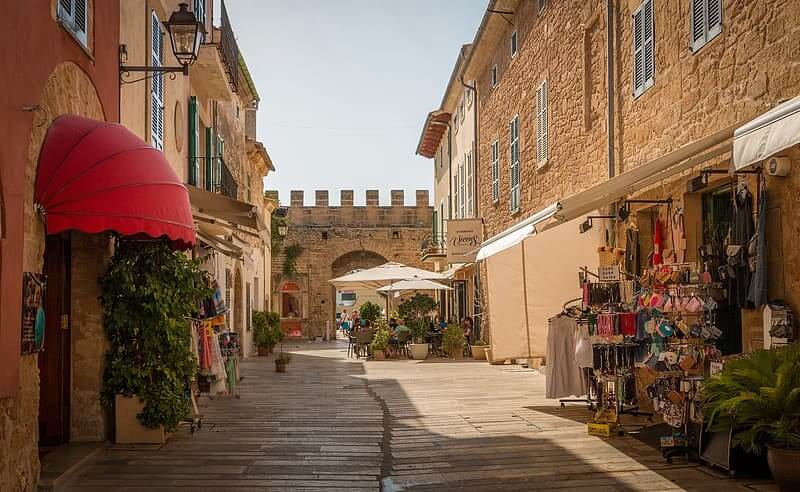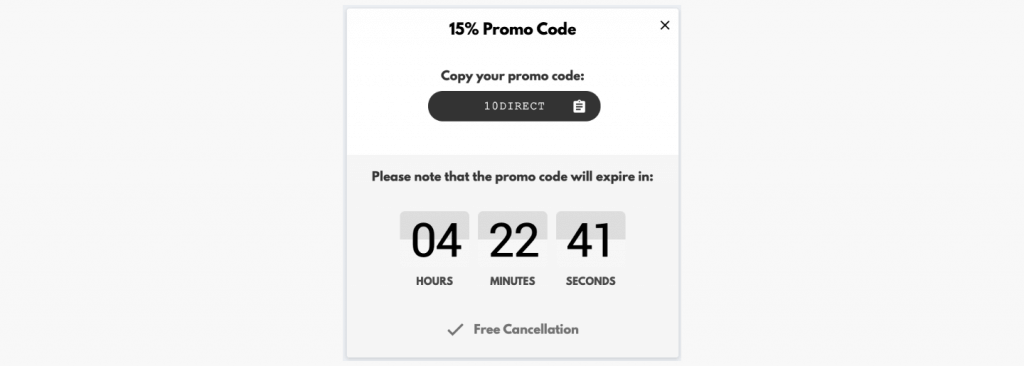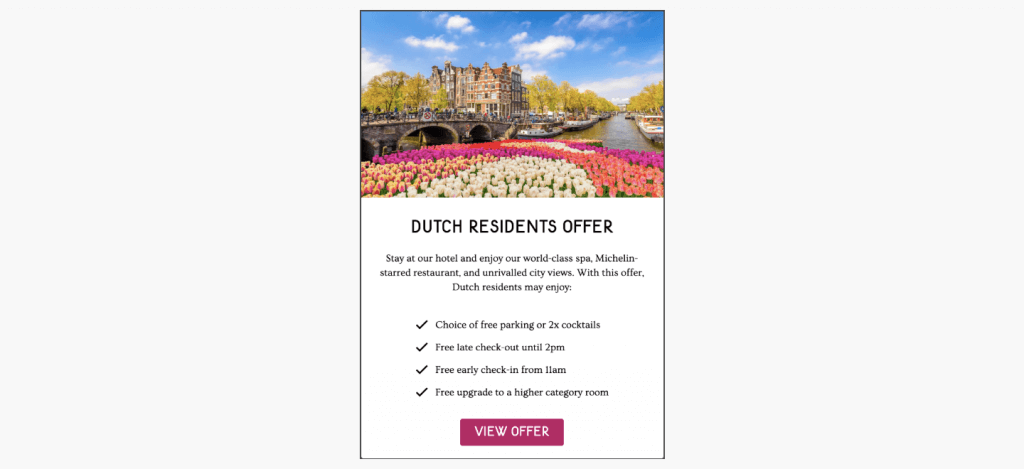
A demand shock in the travel industry can come from many sources; a financial crisis, health crisis, or political crisis. And as the term suggests, they often can’t be predicted.
NB: This is an article from Hotelchamp
The initial results can be devastating, and quickly hoteliers will try to reduce the negative impact of the lower demand. Still, while needing to make these decisions, hoteliers will be facing uncertainty and unknowns. We’ve taken a look at what’s happened in the past, and what hoteliers can learn from these previous demand shocks.
The impact: inelastic supply, price wars and health-related demand shocks
In the case of a shock to hotel demand, the supply of rooms in a city cannot be easily reduced in the short-term to account for the lower demand. While staffing and utility costs can be scaled down to a degree, rooms cannot be repurposed for other economic activity, and so the fixed supply of rooms chase a reduced pool of consumers. In a competitive market characterised by inelastic supply, a demand shock leads to a disproportionately large price drop, as hotels compete on price to win the same size slice of a shrinking pie. As this behavior tends to be reciprocated by hotels who need to match prices in order to compete, the net effect is a low ADR and occupancy for all. Hoteliers have discussed avoiding this competitive trap, however for many this may be impossible given the competitive context.
Precedent from the 2002-2004 SARS outbreak shows that the dynamics of a demand shock caused by a health crisis are different to demand shocks caused by a financial crisis. The Global Financial Crisis of 2007-2008 caused a pronounced effect over a long period of time, with the recovery of occupancy rates occurring many years after the crisis ended. In contrast, once the SARS outbreak had subsided, occupancy rates in North East Asia bounced back to pre-crisis levels. It is important to note that the current health crisis is on a different order of magnitude to SARS, with a financial crisis an increasingly likely possibility.

Four ways to convert your website visitors during a demand shock
While many visitors may be put off travelling, those who end up on your website will be those willing to travel. It is vital to capture these visitors in the critical window when they are on your website, otherwise the visitor may leave and end up booking with a competitor. Below we will outline key strategies you can adopt to address the demand shock.
1. Take advantage of low occupancy rates
Low Occupancy Offers
Having a low occupancy level can unlock a set of powerful offers that are simply not economic during high occupancy periods. For example in times of high occupancy offering a complimentary room upgrade to induce a booking comes at an opportunity cost. The higher-category room could have been sold to someone else had it not been given away for free. The offer is therefore not revenue-neutral, but actually costs the hotel revenue it could have generated.
When demand drops, the opportunity costs of such offers are reduced dramatically. Offering a higher-category room for free does not come with the same level of opportunity cost because it probably would have been left unsold otherwise. With such spare capacity, higher category rooms can be used as bargaining chips to persuade a visitor to book.
A similar logic applies to all other attributes of a hotel based on demand: food and beverage, services where staffing hours are fixed (concierge, trainers, spa staff etc), bike hire, and parking. Make sure that your promotional strategy takes advantage of the spare capacity in your hotel’s assets in order to reduce your dependency on costly discounting.
Low Occupancy Upsell
Focusing on leisure is especially important with business travel falling swiftly from corporate travel restrictions and event cancellations. From a sample of Hotelchamp customers, it is evident that there is a large volume of leisure travellers booking for just 1 night on a Friday or Saturday.

There are signs that a 1-night weekend visitor might be persuaded to extend their stay to include a second weekend night. Looking at 2-night leisure stays, there is a considerable spike on Friday night. Given this information, a great upsell campaign would target 1-night weekend visitors and incentivise them to add a night, effectively doubling their length of stay.

However when occupancy levels for Friday or Saturday are high, it doesn’t make as much sense to offer discounts to 1-night weekend visitors to extend their stay. Selling an extra Saturday or Friday night at a 20% discount could block the room and prevent someone else willing to book this night at full price.
When occupancy is depressed due to a demand shock these rules do not apply because even on weekend days occupancy is low. The opportunity cost of targeted weekend upsell campaigns vanishes. Take advantage of these offers while the economics makes sense.
2. Match your offers across channels
In times of low occupancy, hotels often run special campaigns on OTA websites to capture the residual market demand. While this may be successful in capturing more demand, many hotels do not offer the same date-targeted offers to their own website visitors and customers. The impact is that the costs of steep discounts are combined with OTA acquisition costs. A simple housekeeping move is to run date-targeted campaigns on the direct channel as well as on OTAs.
Campaign Example 1: Date Targeted Promotion

| 1. Targeting: Distressed dates e.g. if a visitor searches for any dates between 7th March – 30th March, or if lead-time is less than 40 days. 2. Promocode: A 1-click-copy promotion code is an effective way to make the visitor feel they have an exclusive offer. 3. Count-down clock: Counts down for predefined time such as 4 hours to increase the level of scarcity. Organic scarcity based on room demand is less effective with a demand shock as availability is much more widespread, so offer scarcity can help drive conversion. 4. Reassurance: Visitors will read the message top to bottom, so it is great to end on the free cancellation message to reduce uncertainty. |
Note on Luxury Hotels: Psychological studies show that when making decisions we rely on mental shortcuts, such as price, to assess the quality of a product. A high price signals a higher quality, while a low price signals a lower quality. For luxury hotels, slashing prices can reduce the perceived quality of the hotel. Instead of running aggressive price discounts and sales, luxury hotels can offer non-price value-adds as a means to increase demand, such as free breakfast, club access, or other perks based on the need.
3. Develop Localised Offers
For many hotels, the domestic market makes up a large proportion of visitors. Domestic travelers may see less risk in travelling within their familiar home country, compared to travelling abroad. Additionally, the ability to travel by car may be seen as preferable to navigating airports. Therefore using geo-targeting to capture the domestic market with locals-only offers can be effective.
Campaign Example 2: Localised Offers

| 1. Targeting: Residents of the Netherlands based on their IP address 2. Offer: This value-add offer (no price discount) is made possible by low occupancy because it is much easier to offer late check-out, early check-in, and a room upgrade when there is a surplus of rooms available for visitors. Parking may be similar depending on non-hotel demand for parking in the city. Local residents are much more likely to be driving to the hotel hence the free parking, however we offer non-drivers with a free-cocktails alternative. Notice, even free cocktails can be easier to offer in periods of low demand, as there can be more capacity in the restaurant/bar. 3. Content: Highlight the value attributes of the hotel that appeal to domestic travellers. |
4. Highlight Free Cancellation
The current spread of the Coronavirus creates a perception of risk for a consumer looking to book a stay in the future. Consumers may seek out cancellation options and so offering free cancellation can give your hotel a better chance at capturing the risk adverse customer. If you are offering free cancellation, make sure that it is prominently displayed on your website as many will not enter the booking engine.
Campaign Example 3: Free Cancellation Exposure

| 1. Targeting: Shown to all visitors to maximise exposure 2. Positioning: Always visible at the bottom of the page 3. Content: Highlights free cancellation |
Reducing Cancellation Risks
For stays already booked, cancellations are having a big effect on revenue as consumers reconsider their booked travel, and major events become cancelled. Despite impacting revenue, relatively few hotels employ cancellation persuasion tactics to reduce cancellations.
In the examples below from audible and Adobe, the customer was persuaded not to cancel a subscription due to the compelling cancellation offer:


To better address cancellations it helps to distinguish between the different motivations for cancellations:
1. Certain Cancellation
For this type of cancellation, the risk of travel is too high for the visitor and therefore they will not be persuaded by any special offers, even with heavy discounting. However, this visitor may be persuaded to defer their stay for when the crisis is over.
For hotels, it can be in the form of a two part promotion:
- If a visitor re-books with different dates then they can enjoy an exclusive perk (a 20% discount code)
- Free cancellation for their new reservation
This allows a hotel to capture the demand of that visitor, and provide cash flow if paid upfront.
Many visitors will cancel irrespective of an offer to defer travel. You can target visitors who have already cancelled their stay with the same offer to encourage future transactions (although with reduced obligation).
2. Cancellation due to risk of upcoming travel
For hotels with cancellation windows 7 or more days in advance, you might consider increasing this cancellation window to visitors in the cancellation process. By informing these visitors that free cancellation has been extended up until their stay, these visitors can be reassured that they do not need to cancel now and can defer their decision until a later date. It may be that a chance to re-think is all that is needed.
3. Price Opportunism
As market prices have dropped considerably, consumers may cancel their hotel stay to rebook at lower rates. Anecdotal evidence from hotels suggest that consumers are actively cancelling their stay to rebook another hotel at a lower rate. Target visitors looking to cancel their stay with a contact window, informing the customer that they can take advantage of special price drops.
Campaign Example 4: Last Minute Price Drop

| 1. Targeting: Show to visitors on the cancellation page. If the cancelation page is on some part of the booking confirmation page, then add special targeting to trigger the message only if the visitor has scrolled to this section. Speak to Hotelchamp for assistance on setting this up. 2. Contact form: The message allows the visitor to directly write to the hotel via the message, or provides the visitor the contact details. 3. Mobile: a different format is suggested on mobile so that when the visitor clicks the phone number, it automatically is entered into their phone. |
Key takeaways
- Take advantage of low occupancy rates with offers focused on additional nights, upsell, and other undercapitalised assets of the hotel like parking and F&B.
- Always match OTA campaigns with direct campaigns
- Use geo-targeted offers to drive local demand
- Luxury hotels should avoid heavy discounting and focus on value-add promotions
- Offer free cancellation for new bookings
- Apply cancellation persuasion techniques for visitors in the cancellation process
Conclusion
Planning the way forward during a crisis is an ongoing challenge and requires input from multiple stakeholders in your business, but all is not lost. Being creative, understanding the risks and enabling your team to support your customers will help minimise some of the negative impact. There are still many unknowns when it comes to the current Coronavirus outbreak, and our thoughts are with all of our clients and everyone who has been impacted by this crisis.



